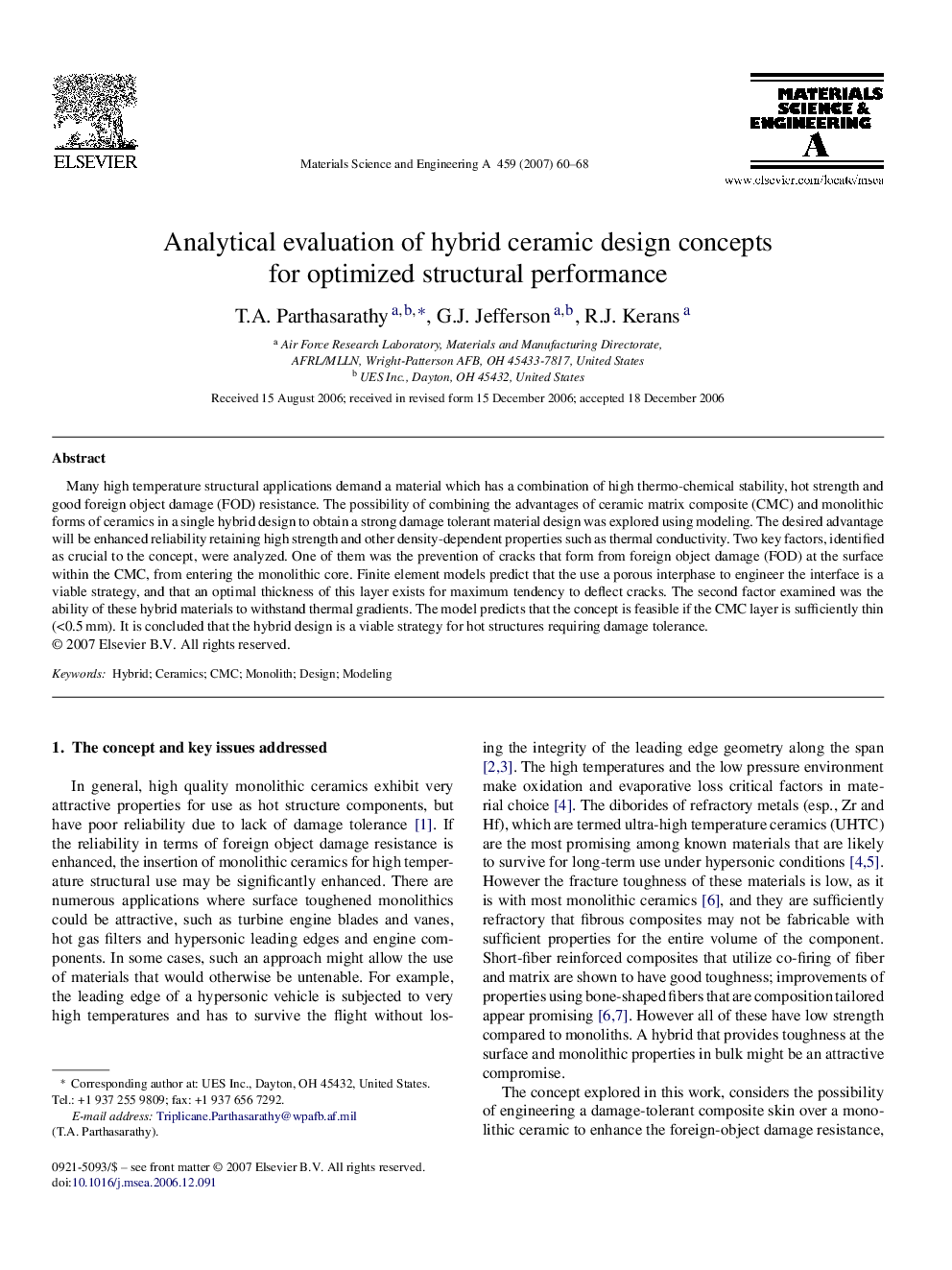| کد مقاله | کد نشریه | سال انتشار | مقاله انگلیسی | نسخه تمام متن |
|---|---|---|---|---|
| 1583844 | 1514894 | 2007 | 9 صفحه PDF | دانلود رایگان |

Many high temperature structural applications demand a material which has a combination of high thermo-chemical stability, hot strength and good foreign object damage (FOD) resistance. The possibility of combining the advantages of ceramic matrix composite (CMC) and monolithic forms of ceramics in a single hybrid design to obtain a strong damage tolerant material design was explored using modeling. The desired advantage will be enhanced reliability retaining high strength and other density-dependent properties such as thermal conductivity. Two key factors, identified as crucial to the concept, were analyzed. One of them was the prevention of cracks that form from foreign object damage (FOD) at the surface within the CMC, from entering the monolithic core. Finite element models predict that the use a porous interphase to engineer the interface is a viable strategy, and that an optimal thickness of this layer exists for maximum tendency to deflect cracks. The second factor examined was the ability of these hybrid materials to withstand thermal gradients. The model predicts that the concept is feasible if the CMC layer is sufficiently thin (<0.5 mm). It is concluded that the hybrid design is a viable strategy for hot structures requiring damage tolerance.
Journal: Materials Science and Engineering: A - Volume 459, Issues 1–2, 25 June 2007, Pages 60–68